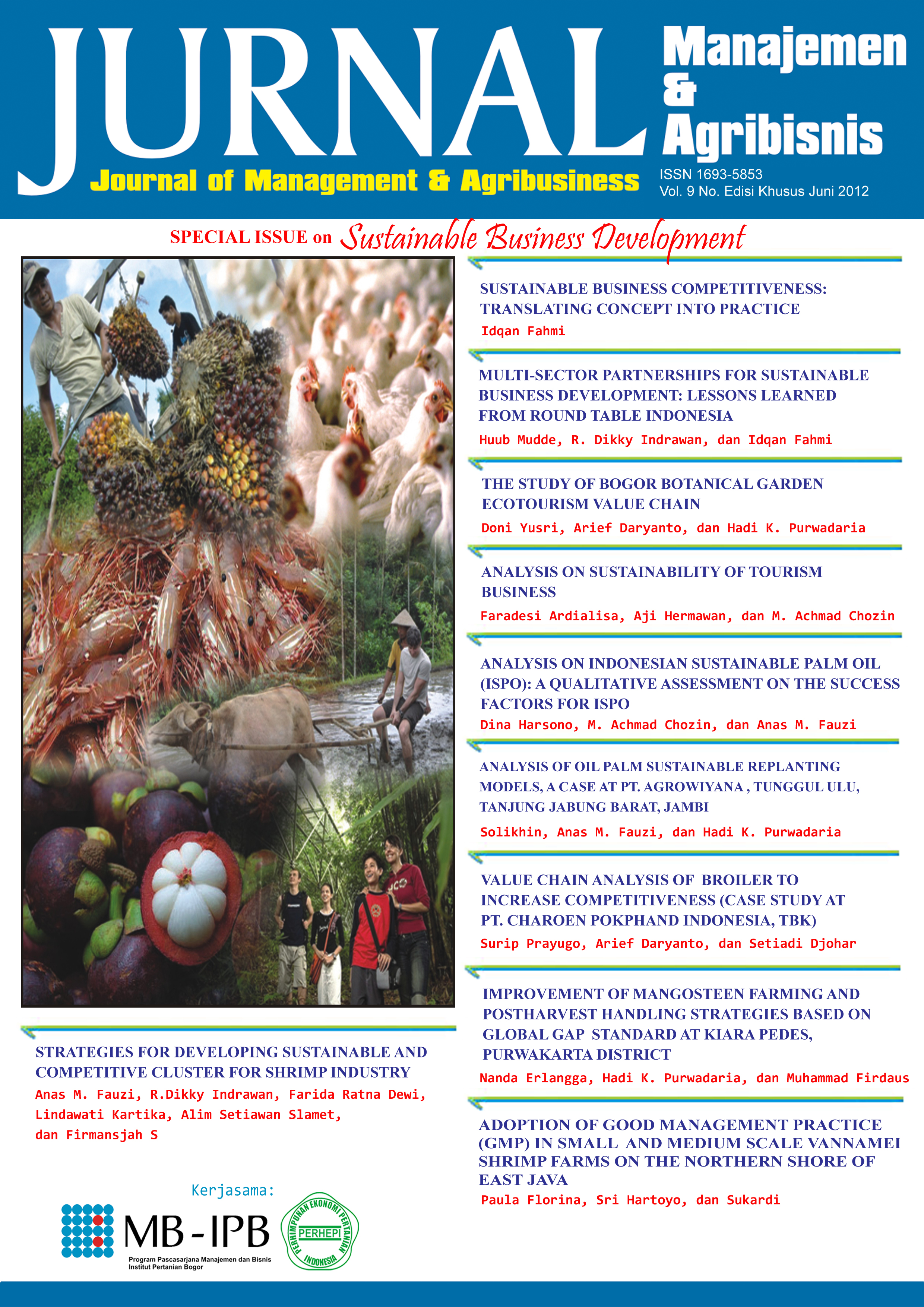IMPROVEMENT OF MANGOSTEEN FARMING AND POSTHARVEST HANDLING STRATEGIES BASED ON GLOBAL GAP STANDARD AT KIARA PEDES, PURWAKARTA DISTRICT
Abstract
The objectives of this research were (1) to determine the value chain of mangosteen at Kiara Pedes Sub district, Purwakarta District, (2) to identify the gap between actual condition at Kiara Pedes and Global GAP standard, (3) to identify internal and external factors that can affect the implementation strategy of Global GAP standards, and (4) to develop alternative strategies that can be applied to improve the system of mangosteen cultivation and post harvest handling based on Global GAP standards. The analytical tools being used in this study were value chain analysis, gap analysis, internal and external factor evaluation (IFE, EFE, IE matrix), SWOT analysis, and quantitative strategic planning matrix (QSPM). Identified primary actors in mangosteen value chain were farmers, middlemen, suppliers, exporters, and local and overseas retailers. Based on IE Matrix and SWOT analysis, the strategies to implement Global GAP standards were (a) to increase mangosteen productivity and improve its quality by using developed cultivation and postharvest technology, (b) to increase productivity, and improve quality and transportation network in accordance with Global GAP standard, (c) to improve clean water and post-harvest infrastructure through cooperation with exporters and financial institutions, and (d) to improve warehouse and supporting facilities such as packaging and sanitation according to the Global GAP standard for minimizing the environmental constraints. The most priority strategies from the QSPM analysis were improving clean water and post-harvest infrastructure through cooperation with exporters and financial institutions, followed by using the developed cultivation and postharvest technology to increase mangosteen productivity and improve its quality.
Keywords: Mangosteen, Global GAP Standard, Value Chain, Improvement Strategies, Farming and Postharvest Handling Practices
Authors
Authors who publish with this journal agree to the following terms:
- Authors retain copyright and grant the journal right of first publication with the work simultaneously licensed under a Creative Commons Attribution License that allows others to share the work with an acknowledgement of the work's authorship and initial publication in this journal.
- Authors are able to enter into separate, additional contractual arrangements for the non-exclusive distribution of the journal's published version of the work (e.g., post it to an institutional repository or publish it in a book), with an acknowledgement of its initial publication in this journal.
- Authors are permitted and encouraged to post their work online (e.g., in institutional repositories or on their website) prior to and during the submission process, as it can lead to productive exchanges, as well as earlier and greater citation of published work (See The Effect of Open Access).

